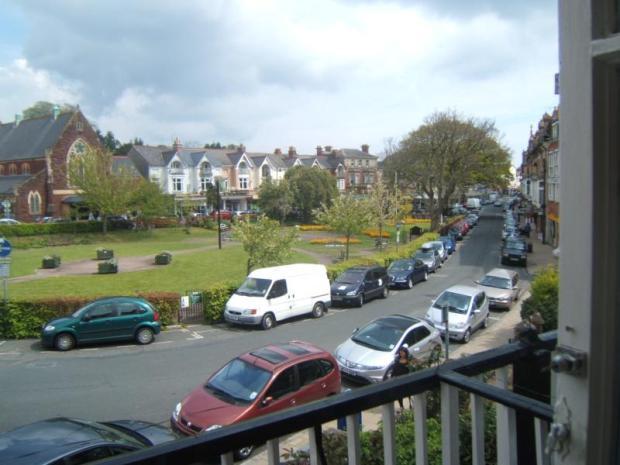IDEAS FOR PALACE AVENUE
A few years ago I was
asked by Paignton Community Partnership to ask my daughter who’s a landscape architect (and lives in Brazil) for her views on what could be done with
the Palace
Avenue
area of Paignton. Here are some of her ideas, in reply to my query about removal of the hedges which surround the park:
From what you said, I think you have exactly the right idea, I am not sure
taking out the hedges will be a complete solution and my gut instinct is that
this would be a terrible loss.
Sure there are access problems, but this will
not be helped by removing the hedges, and furthermore the hedges give the park
insulation from the sounds of the city, the car exhausts and provide an
incredibly rich habitat for wildlife.
Perhaps consider keeping part of the
hedge. If they want to remove the hedges for other reasons - eg crime, then
fair enough, greenery can be replaced that is not so good for criminals to hide
in.

But here follows my ideas:
Tell them how it feels from a pedestrian point of view. Because most people,
and most decision-makers\politicians, only travel about in cars and therefore
have no idea how the situation is on foot. But luckily politicians and decision-makers nowadays should have a commitment to the environment and making places
accessible to all, it is the law now so hopefully they will appreciate what you
have to say.
I noticed that the park there is particularly inaccessible! And this is from an
able-bodied, able-sighted and able-minded 30 year old's point of view, I
noticed it would be almost impossible to cross this road in safety for an
elderly person, a person with impaired sight, a wheelchair user or a child.
One solution would be:
An clearly visible hierarchy of routes to enter the park: this means at the top
of the hierarchy are the MAIN entrances (one
at the top and one at the bottom), which should be designed to be obvious, ie
larger, wider, possibly with signage, or some other features to draw your
attention, eg. perhaps with a beacon, a tall plant, an archway etc. And at this
main entrance point should be a high quality crossing point, with clear views
for the pedestrian.
The crossing could be raised - creating a hump for cars to
see clearly and to slow their speed down, making it wheelchair accessible. At the crossing the road should be narrowed, reducing the distance pedestrians need to
stay in the line of danger, and also having the effect of slowing the speed of
vehicles.
Lower down the hierarchy COULD be other exit points for people who know their
way around much better, and who are quick on their feet and able to run across
the road.
This hierarchy of routes and entrance points would help.
 But in addition, (a very controversial subject and therefore
not likely to be accepted) the parked cars create a problems for pedestrians,
as well as detracting from the visual attractiveness of the park, the parking
spaces perhaps could be better organised, and/ or reduced.
But in addition, (a very controversial subject and therefore
not likely to be accepted) the parked cars create a problems for pedestrians,
as well as detracting from the visual attractiveness of the park, the parking
spaces perhaps could be better organised, and/ or reduced.
What exists now is an
inappropriately wide road, narrow pavements, and informal parking, anywhere,
anyhow. What could be better would be if the carriageway was to be kept narrow,
in order to keep car speeds low, widen the pavements and add a formal parking
lane, or parking boxes painted on the ground, situated so that they do not
block views from the pedestrian crossing.
 |
| An oasis of calm in the town but rarely visited by anyone |
Basically in this type of public
amenity it is inappropriate that parked cars should to be so dominant, and it
also the proportion of width of road to width of pavement is also wrong, when
in fact people want to go to the park to be in a green and pleasant
environment, but are faced with big wide roads with very short distances of
visibility, cars can career around the corners at high speed. The visual
confusion of the pedestrian environment would lead to someone crossing the road
to dither and perhaps attempt to cross the road in a bad place.
Another additional (and controversial) point: Would it be possible and\or
attractive if one of the streets on the side of the park was turned into a
pedestrianised street?
Or even perhaps just a few metres of it in between
junctions? Because the road layout and disproportionately large surface area
devoted to cars gives it the appearance of just a roundabout, albeit with a
pretty park inside. It seems a pity not to make the most of it, and obviously
the safety hazards are more than a pity. If there was a fatality in a car
pedestrian collision, the fault would not really be the driver or the
pedestrian but the fault would be the urban planners to allow a pretty park
with such dangerous access.
See also: http://www.torbay.gov.uk/index/yourbay/parks/parkareas/parkslist/palaceavenue.htm













